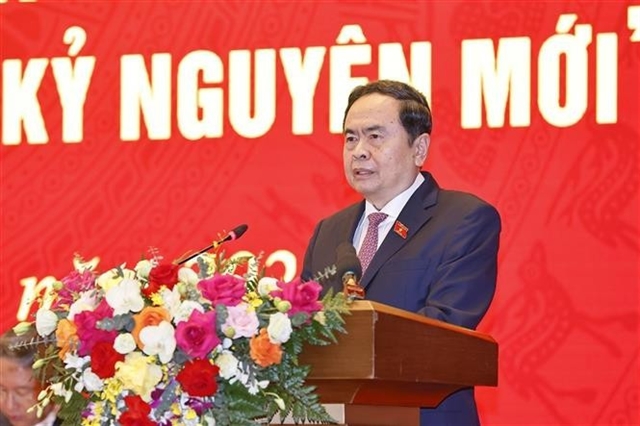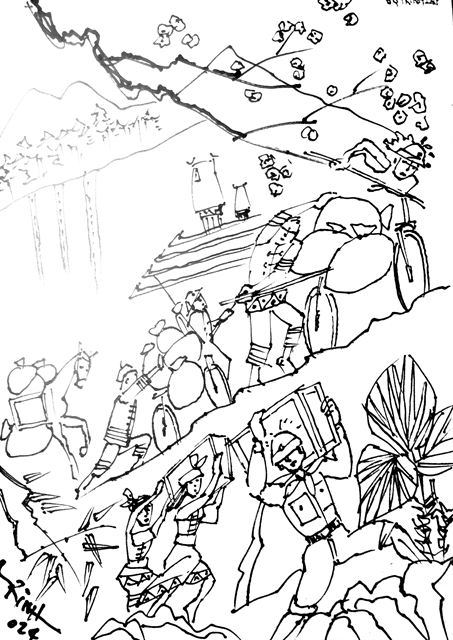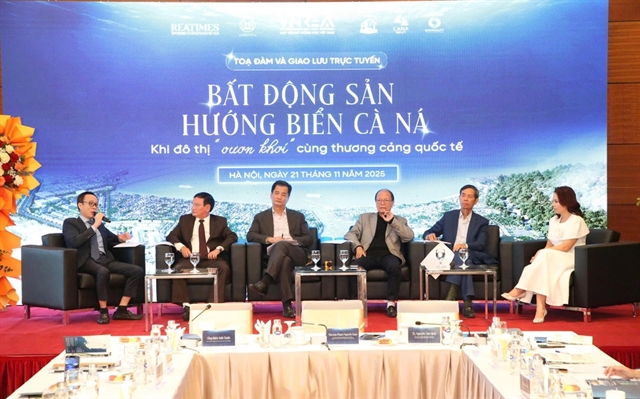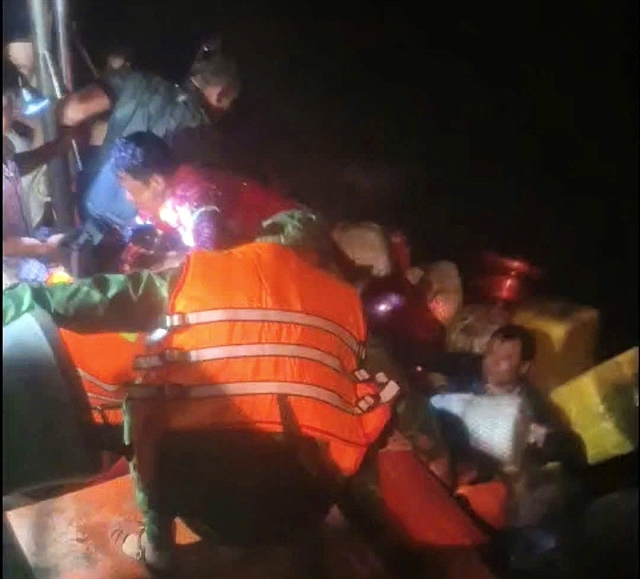 Talk Around Town
Talk Around Town

 |
| Illustration by Trịnh Lập |
by Nguyễn Mỹ Hà
Leading up to next month's Grand Celebrations commemorating the"world-shaking" battle victory of a mostly barefoot army against a fully-equipped French Far East Expeditionary Corps (CEFEO), the whole country has been discussing the victorious Điện Biên Phủ battle 70 years ago.
Domestic tourists sign up for trips to Điện Biên, spontaneous travellers drive up to the northwestern city, which takes about 6 hours by car from Hà Nội, and youths ride their motorbikes with cameras on their foreheads to the spot of the famous victory in the war for independence.
An expanded and upgraded Điện Biên Airport was inaugurated in December 2023 and received large aircraft A321 for the first time, and Việt Nam Airlines operates daily flights from Hà Nội to Điện Biên and three flights from Hồ Chí Minh City. All roads, by air and on land lead to Điện Biên this spring.
Travellers today use all vehicles possible to go to the northwestern valley and revisit the old battlefield, but none would want to try to walk, or go on a bicycle, heavily loaded with a few hundred kilogrammes of rice in jute bags, going uphill and down to bring food to our soldiers, from as far away as Thanh Hóa Province.
Today Google map estimates the direct path from Thanh Hóa to Điện Biên at about 485km, but 70 years ago, the men and women from Thanh Hóa walked, mostly barefooted, a full 1,500km winding and up-down hill dirt roads in the early months of 1954. They went in their thousands.
According to archives of Thanh Hóa Museum, the authorities of the province mobilised 182,124 volunteers to carry rice, ammunition and other supplies on their shoulders, and 11,000 volunteer porters to push pack-bicycles and self-made carts to transport supplies to Điện Biên. In all, Thanh Hóa contributed 1,061,593 journeys of people going to Điện Biên, i.e. half the province's population at that time.
The whole campaign was served by 261,000 volunteer porters in total, but those from Thanh Hóa Province accounted for the majority. Along with them went dozens of thousands of volunteers and self-made carts.
According to Thanh Hóa Museum, from the end of 1953 until March 1954, two shifts of volunteers carried 2,352 tonnes of staple food and a further 265 tonnes of other edible goods. The people of Thanh Hóa mostly used bicycles in serving the campaign.
The Việt Minh (the League for Independence of Việt Nam founded in 1941) would not have its own army until 1944, when in a forest among the mountains of Cao Bằng Province, 34 militiamen got together in three teams under the leadership of Võ Nguyên Giáp, a law-graduate-turned-teacher-turned soldier. The group included 29 people of ethnic minorities and only five from the Kinh: 19 were Tày, 8 were Nùng, one Mông, and one Dao.
On the other side, The French Far East Expeditionary Corps was a colonial expeditionary force of the French Union Army, initially set up in French Indochina in 1945.
The CEFEO was largely made of enlisted indigenous tirailleurs from the French Union colonial or protectorate territories. The French Foreign Legion consisted mainly of mercenaries from Europe and the rest of the world. According to French archives, nearly half of the total personnel of the corps were French professional soldiers, mostly serving with paratroopers, artillery and other special units.
During the Điện Biên Phủ Campaign, the bicycles carrying goods were a laughing matter for the seemingly far superior French army. Dubbed the iron wall that shall not be broken, the French entrenched military base Điện Biên valley was made into a special shield so that not a bullet could get through.
During the campaign, the Việt Nam People's Army mobilised more than 20,000 bicycles as goods transporters to each carry at least 100kg of goods. The "iron packhorses" were named "King of the Battlefield" for their minimalist size and weight, as well as fantastic mobility.
They carried large goods dismantled in parts and didn't need oil and gas to function. The bicycles were easy to repair, easy to hide and could move in any climate conditions.
From the Lược Wharf in Thọ Xuân District of Thanh Hóa, thousands of people and vehicles embarked to supply Điện Biên soldiers. The place has become historic for seniors who still cherish the memory seeing their family or relatives pushing fully loaded carts and bicycles towards victory at Điện Biên.
Standing in front of a bicycle in Điện Biên Phủ Victory Museum recently, I read that the bicycle was used to carry over 300 kilos of rice to the battle field. Trịnh Ngọc from Thanh Hóa Province alone carried 345.5 kilograms, far higher than the designed capacity a simple bike could carry.
The highest record belonged to the bicycle of Ma Văn Thắng who could carry 352 kilos of supplies, proving that a normal person is capable of extraordinary deeds when called upon. Today, his bicycle has been put on display in Phú Thọ Province Museum.
But not only bicycles were used to carry goods. Other vehicles included self-made carts, people carrying goods with shoulder poles, ox or horse carts, boats and cyclos. One of the carts is on display in Điện Biên Phủ City Museum. The cart's wheel was made from two placards of wood, one of which was cut and shaped from a family's lacquered wood altar.
The wood wheel was not just any wheel, it was the iron will of the people who gave up their spiritual belongings for the common cause of the nation so that the people would not lose what was a historic battle.
Ultimately, millions of people's homes were deserted as they abandoned the populous areas to retreat into the mountains and jungles to build up during the long nine years of resistance from 1946.
The final win did justice to many people who died fighting, mostly barefoot, using their iron will to bring freedom to the country. VNS




